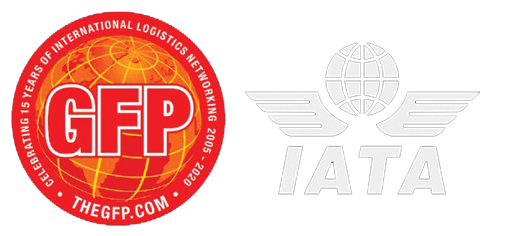In today’s interconnected global economy, air freight plays a pivotal role in the swift and efficient transportation of goods across borders. However, ensuring the security of air cargo remains a multifaceted challenge. From technological advancements to regulatory compliance and risk mitigation strategies, the complexities of securing air freight demand constant evolution and adaptation.
Importance of Air Freight Security
The transportation of goods via air freight has surged in recent years, serving as a critical backbone for various industries, including manufacturing, pharmaceuticals, perishables, and e-commerce. The speed and reliability of air transportation make it an attractive choice for businesses aiming to meet tight deadlines and maintain supply chain efficiency. However, the heightened significance of air freight also amplifies the importance of stringent security measures.
Technological Advancements in Cargo Screening
Advancements in technology, particularly artificial intelligence (AI), have revolutionized cargo screening and threat detection systems. AI-driven solutions offer enhanced capabilities to analyze vast amounts of data and identify potential risks more accurately and swiftly than conventional methods. These systems utilize machine learning algorithms to continuously improve their threat detection capabilities, adapting to evolving security threats in real-time.
Implementing AI-driven cargo screening technologies, such as sophisticated scanning systems and automated risk assessment tools, has significantly bolstered the ability to identify suspicious items or anomalies within cargo shipments. These technologies not only expedite the screening process but also enhance the precision and efficacy of security checks.
Regulatory Updates and Global Collaboration
Ensuring air cargo security transcends national boundaries. International collaboration and regulatory frameworks are essential components in fortifying security measures across the air freight industry. Regulatory bodies continuously update and refine guidelines to address emerging threats and vulnerabilities.
Collaboration between governments, regulatory agencies, industry stakeholders, and international organizations is pivotal. Initiatives such as the World Customs Organization’s SAFE Framework of Standards and the International Air Transport Association’s Secure Freight Program foster cooperation and standardization of security protocols worldwide. Such collaborations aim to harmonize security practices, streamline procedures, and facilitate the exchange of crucial information to preempt potential security breaches.
Risk Mitigation Strategies
Despite technological advancements and regulatory efforts, the dynamic landscape of air freight security presents persistent challenges. Implementing comprehensive risk mitigation strategies is indispensable in safeguarding air cargo. These strategies encompass a holistic approach that combines proactive measures, contingency planning, and continuous monitoring.
- Comprehensive Risk Assessment: Conducting thorough risk assessments involving vulnerability analysis, threat identification, and risk prioritization is fundamental. Understanding potential risks allows for the implementation of targeted security measures tailored to specific threats.
- Training and Awareness: Ensuring that personnel involved in handling air cargo receive comprehensive training on security protocols and threat recognition is crucial. Creating a culture of security awareness among employees strengthens the overall security posture.
- Supply Chain Integrity: Securing the supply chain from origin to destination is imperative. Employing technologies like blockchain to track and authenticate cargo movements enhances transparency and minimizes the risk of tampering or unauthorized access.
The Imperative of Robust Air Freight Security
The significance of robust security measures in air freight cannot be overstated. Ensuring the integrity and safety of cargo not only protect businesses from potential financial losses due to theft, damage, or delays but also mitigate broader risks to national security and public safety.
The Dynamic Nature of Air Cargo Security
The transportation of goods via air freight has seen exponential growth, driven by the demands of diverse industries like electronics, automotive, and fashion. This burgeoning demand, while a testament to the efficiency of air transportation, poses a challenge in safeguarding the integrity of cargo against evolving security threats.
Technological Advancements in Cargo Screening
AI-driven cargo screening systems have emerged as game-changers in the realm of air cargo security. These systems leverage machine learning algorithms to analyze data patterns, enhancing threat detection capabilities. Advanced scanning technologies, including computed tomography (CT) scanning and millimeter-wave imaging, enable precise and non-invasive cargo inspection.
Moreover, the integration of AI and big data analytics enables the real-time monitoring of cargo movement patterns, allowing for predictive risk assessments and targeted interventions to mitigate potential threats.
Regulatory Updates and Global Collaboration
International cooperation among regulatory bodies and industry stakeholders remains instrumental in fortifying air cargo security. Regulatory frameworks such as the European Union’s ACC3 (Air Cargo or Mail Carrier operating into the EU from a Third Country Airport) and U.S. Transport Security Administration’s (TSA) Known Shipper Program aim to standardize security protocols and strengthen risk assessment procedures for air cargo.
Furthermore, collaborative efforts among countries through organizations like the International Civil Aviation Organization (ICAO) promote information sharing and the adoption of best practices, fostering a more cohesive global approach to air freight security.
Risk Mitigation Strategies Beyond Traditional Approaches
Comprehensive risk mitigation strategies encompass a wide spectrum of approaches beyond conventional security measures. Employing geofencing and GPS tracking systems for real-time cargo location monitoring minimizes the risk of unauthorized diversions or theft during transit.
Additionally, the utilization of blockchain technology for secure data sharing ensures the integrity of documentation and reduces the likelihood of fraudulent activities along the supply chain. This immutable ledger system enhances transparency and traceability, instilling greater confidence in cargo integrity.
The Crucial Role of Stakeholder Collaboration
In addition to regulatory bodies, collaboration among various stakeholders within the air freight ecosystem is pivotal. Freight forwarders, airlines, ground handlers, and technology providers must work synergistically to create a comprehensive security framework.
Training and Awareness Campaigns
Investing in continuous training programs for personnel involved in air cargo operations is essential. Educating employees on emerging threats and evolving security protocols ensures their preparedness in handling potential risks effectively.
Innovation in Security Infrastructure
Future-proofing air cargo security entails embracing innovative infrastructure solutions. This includes the development of secure cargo facilities equipped with advanced surveillance systems, biometric access controls, and AI-powered threat detection mechanisms.
Emerging Challenges and Future Trends
As the air freight industry progresses, new challenges and opportunities continue to emerge. Advancements in quantum computing and AI algorithms hold the promise of even more sophisticated threat detection systems, while simultaneously raising concerns about potential misuse by malicious actors.
Additionally, environmental sustainability is becoming an increasingly important consideration in air cargo security. Balancing security measures with eco-friendly practices and minimizing the environmental impact of security technologies will be a key challenge for the industry.
As technology continues to advance, the air freight industry can expect further innovations in security solutions. Predictive analytics, blockchain integration for secure data sharing, and the utilization of drones for perimeter surveillance at cargo facilities are among the potential advancements on the horizon.
However, these innovations bring along their own set of challenges, including the need for constant adaptation to new threats, ensuring compatibility among diverse systems, and addressing potential privacy concerns related to increased data sharing.
In conclusion, enhancing air cargo security requires a harmonized approach that integrates cutting-edge technologies, stringent regulatory frameworks, and robust risk mitigation strategies. The evolution of security measures in air freight is pivotal to not only safeguarding valuable cargo but also maintaining the reliability and trustworthiness of the global air transportation network. As the industry continues to evolve, prioritizing air freight security remains an ongoing commitment to ensure safe and efficient cargo transportation worldwide.


